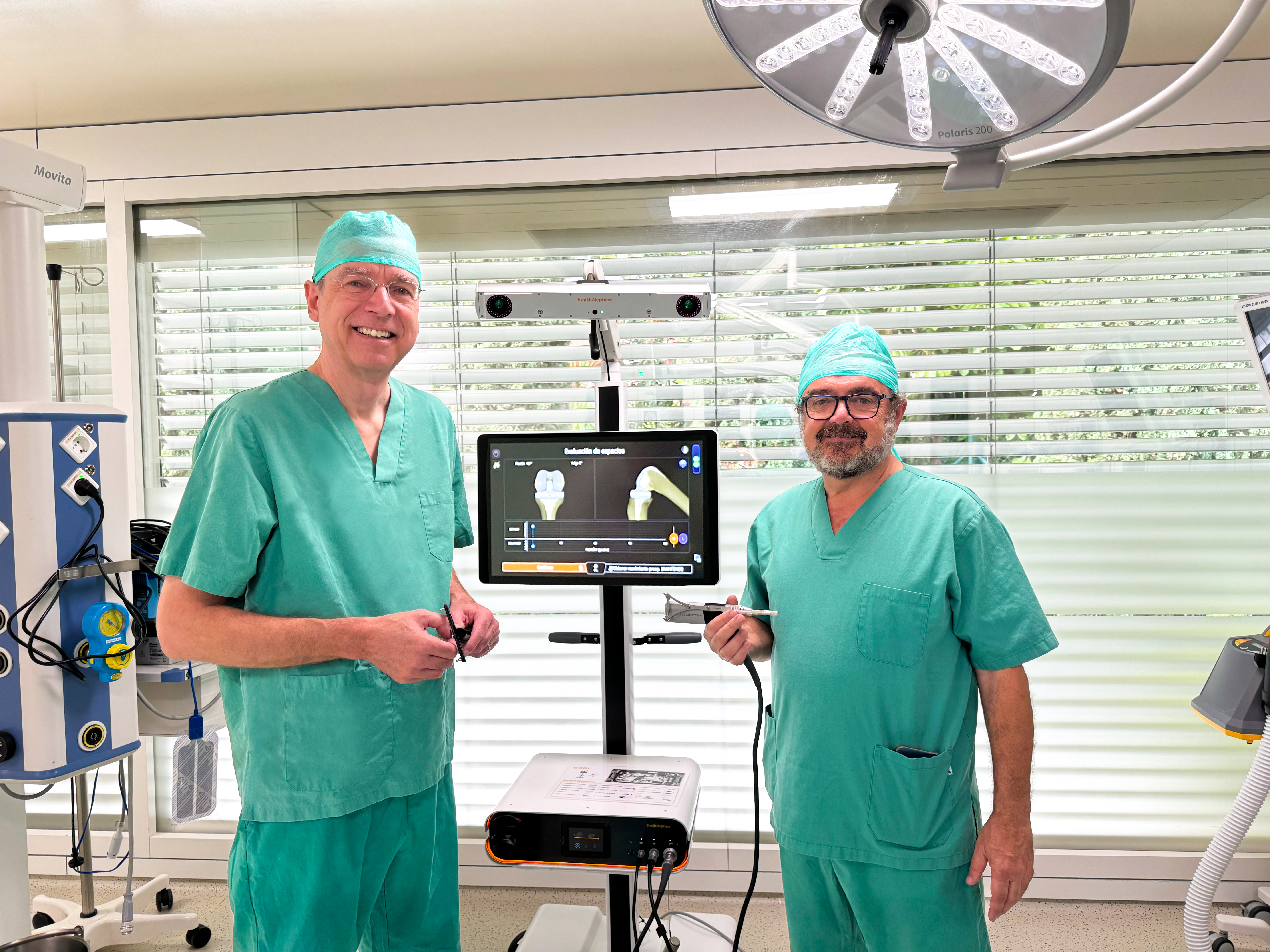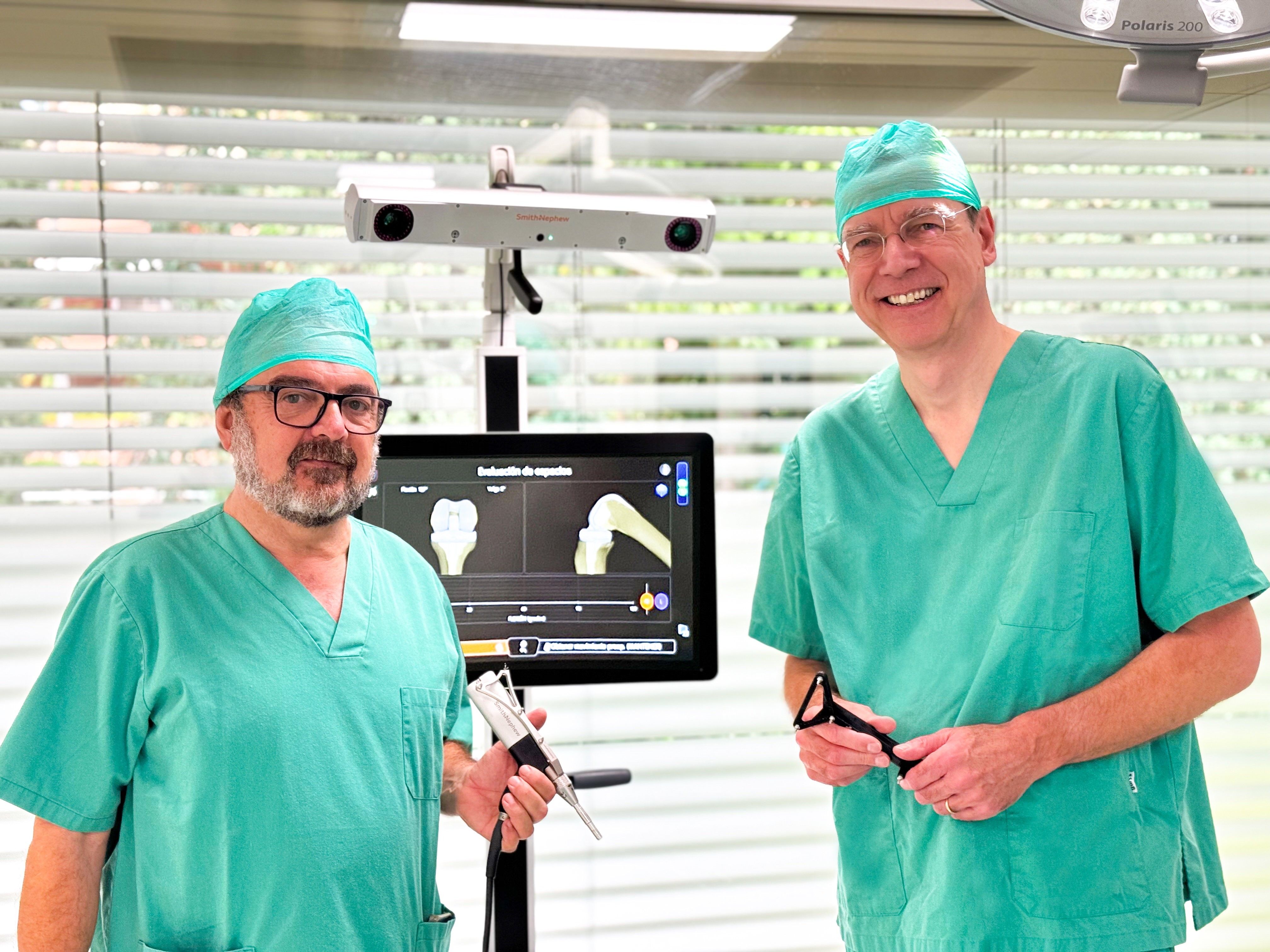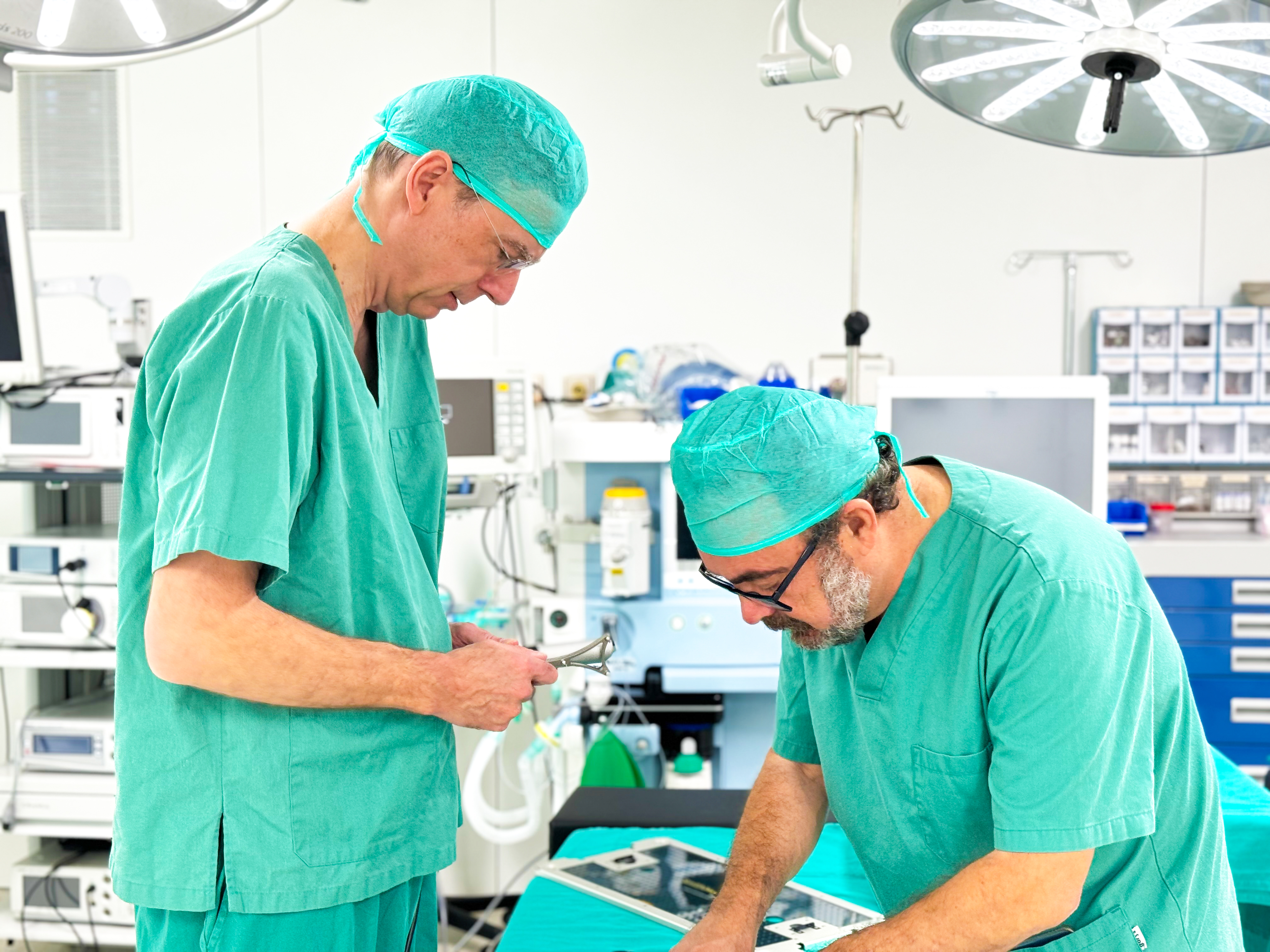
With the recent introduction of robotic assisted surgery using CORI by Smith+Nephew, HC International Hospital has become the first center in Andalusia to use this technology. The assistance of this technology combines robotic precision with the experience and skill of the surgeon and is likely to provide benefits to patients. These include:
• A more anatomical position of the knee prosthesis reproducing the patient’s individual leg alignment rather than a ‘one-fit-all’ leg alignment.
• Maintaining the patient’s original leg alignment should result in a more natural knee feel.
• Robotic assisted surgery allows the surgeon to ‘dial-in’ precise knee ligament balance making slack or too tight ligaments a thing of the past.
• Ligament releases become more or less superfluous reducing the trauma of knee replacement surgery. This in turn should improve recovery times.
• The robotic technology will minimize implant positioning errors expected to result in a longer lasting joint replacement.
A fully functional knee should be stable, be well aligned, allow for unrestricted movement and be pain free during rest and use.
The reality is that many people experience the opposite, a painful, mal-aligned knee that is no longer very mobile and provides reduced or poor function. The leading cause is osteoarthritis, a condition that can develop after meniscus or ligament injury at a younger age or gradual wear and tear over the years. Established osteoarthritis where bone rubs on bone in the joint is one of the main health conditions of our times and contributes to significant disability.
Joint replacement (arthroplasty) is a surgical procedure in which part or all of a worn joint is removed and replaced with an implant (prosthesis). The goal of arthroplasty is to relieve joint pain, restore function and allow return to unrestricted mobility.
 Dr. Thomas Boerger, HC Consultant Orthopaedic Knee Surgeon, explains: “Joint replacement becomes an appropriate intervention in established (bone-on-bone) osteoarthritis when non-operative treatment with painkillers, oral and topical anti-inflammatories, various knee injections, physiotherapy and weight management can no longer relieve the joint pain”. “Hip and knee replacement surgery is a very effective treatment for degenerative joint disease ideally resulting in a pain free joint, improved function and restored quality of life”, adds Dr. Antonio Ayllón, another orthopaedic surgeon at HC International.
Dr. Thomas Boerger, HC Consultant Orthopaedic Knee Surgeon, explains: “Joint replacement becomes an appropriate intervention in established (bone-on-bone) osteoarthritis when non-operative treatment with painkillers, oral and topical anti-inflammatories, various knee injections, physiotherapy and weight management can no longer relieve the joint pain”. “Hip and knee replacement surgery is a very effective treatment for degenerative joint disease ideally resulting in a pain free joint, improved function and restored quality of life”, adds Dr. Antonio Ayllón, another orthopaedic surgeon at HC International.
The addition of CORI robotic assisted surgery will in the hands of experienced joint replacement surgeons further improve results in relation to:
– Accuracy of implantation
– Restoration of the native leg alignment
– Consistently well-balanced ligaments
– Possibly earlier return to activity
– Expected greater patient satisfaction after completed rehabilitation.
 CORI robotic assisted technology allows image free and precise registration of the patient’s leg and knee anatomy at the beginning of the operation. Once fully registered the implantation is initially done virtually on the computer screen in 3D. The surgeon can then refine the implant position according to a number of already assessed parameters including leg alignment, ligament tension / laxity and range of motion. Once satisfied with the virtual implant position the actual operation begins. Here the robotically assisted CORI burr guides the surgeon through the bone resection with high precision. Now it is time to test the trial implants in the knee before positioning the definitive joint replacement implants and close the knee.
CORI robotic assisted technology allows image free and precise registration of the patient’s leg and knee anatomy at the beginning of the operation. Once fully registered the implantation is initially done virtually on the computer screen in 3D. The surgeon can then refine the implant position according to a number of already assessed parameters including leg alignment, ligament tension / laxity and range of motion. Once satisfied with the virtual implant position the actual operation begins. Here the robotically assisted CORI burr guides the surgeon through the bone resection with high precision. Now it is time to test the trial implants in the knee before positioning the definitive joint replacement implants and close the knee.
December 4, 2023
Read other news
Tel.: +34 952 908 628
+34 609 148 799
952908898 Oncology
951829978 Diagnosis by imaging
951829947 Gynecology
952908897 Fertility
951829947 Physiotherapy